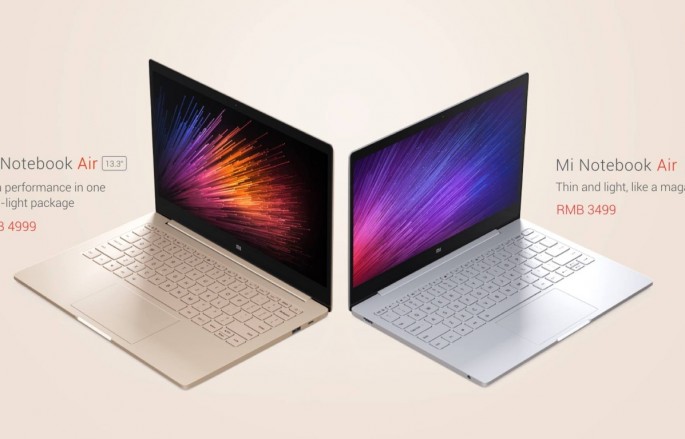According to reports, the electronics company Xiaomi has unveiled Mi Notebook Air.
Let's look at the specs and features of Mi Notebook Air and MacBook Air (2015).
The MacBook Air (2015) features a 13.3-inch display with a resolution of 1,440 x 900 pixels. On the other hand, the Mi Notebook Air has a 13.3-inch display with a resolution of 1,920 x 1,080 pixels.
The Xiaomi Mi Notebook Air features a 40Whr battery that offers 9.5 hours of usage. On the other hand, the Apple device offers 12 hours of usage time.
MacBook Air enters standby mode if put to sleep for over 3 hours to conserve battery life for 30 days. Furthermore, if a user enables Power Nap, they will continue to get new email and calendar invitations while their computer is asleep.
The Mi Notebook Air runs on Windows 10 operating system and the MacBook Air (2015) runs on OS X El Capitan.
The MacBook Air is powered by a 1.6 GHz dual-core Intel Core i5 processor and has 8 GB of RAM. The Mi Notebook Air is powered by an Intel Core i5 dual core processor and has 8 GB of RAM, according to a CNET report.
The Apple laptop is available in 256 GB and 128 GB on-board storage. The Mi Notebook Air has 256 GB of internal storage.
The Xiaomi device weighs 1.28 kilograms (2.82 lbs) and MacBook Air (2015) weighs 1.08 kilograms (2.38 lbs). The 13-inch MacBook Air (2015) carries a price tag of $999. On the other hand, the 13-inch Mi Notebook Air costs around 4,999 Yuan ($751).
The Xiaomi device will be released in China on Aug. 2. According to many reports, Xiaomi will release the device in the United States and other parts of the world. However, the electronics company has not disclosed the availability or price of the device outside China.
Meanwhile, according to a BGR report, the forthcoming MacBook Pro will be released this year and will come with USB-C port. The USB-C port can offer fast battery charging and data transfers and is smaller than earlier standards.
However, some reports suggest that the USB-C interface utilizes electric current that is bigger than one of the earlier-generation interfaces, and can lead to heat dissipation and interference problems when adopting too many at the same time.



























